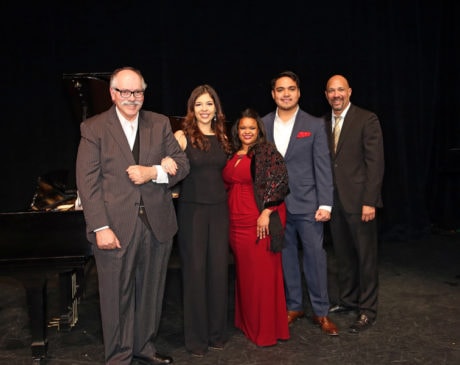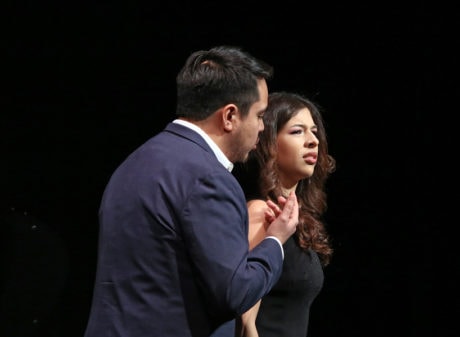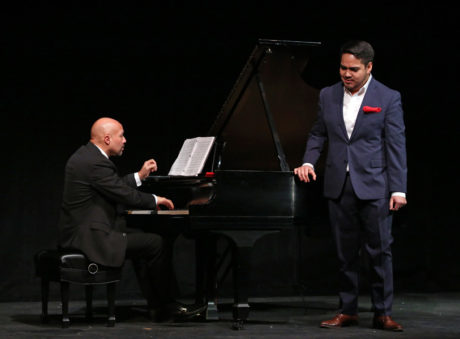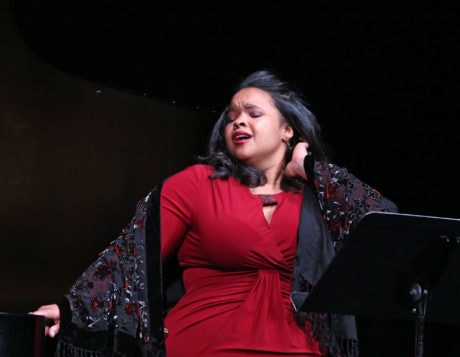Concert Operetta Theater was founded in 2008 to revive and preserve the type of musical theater that’s more lighthearted and accessible than opera, but a bit grander than Broadway. These tuneful musicals mostly were composed by Austrians and Hungarians in the German language and became very popular in America during the age of mass immigration from Europe.

The latest offering from this company takes a different tack, and a most welcome one. It was a salute to the art of zarzuela, the Spanish-language equivalent of operetta. Just like Central European music theater, zarzuela had its golden age between 1850 and 1950. The concert was a potpourri of selections from La Verbena de La Paloma (1894), El Barquillero (1900), El Nino Judio (1911), Doña Francisquita (1923), Los Gavilanes (1923), El Ultimo Romantico (1928), La Parranda (1928), Luisa Fernanda (1932) and La Taberna del Puerto (1936).
Singers were drawn mainly from the roster of resident artists at the Academy of Vocal Arts, one of the world’s most prestigious schools for professional opera singers: Alejandra Gomez (mezzo-soprano), Abraham Bretón (tenor), Jorge Espino (baritone) plus special guests Christina Chenes (soprano) and Valentín Fernández, who has been the Spanish instructor and coach at AVA for many years. Bretón took ill just before the first performance; AVA tenor Roy Hage stepped in to sing one of his songs while the other artists added extra music that had been assigned to Bretón. José Meléndez was music director and pianist.
We heard catchy, romantic music in a wide variety of rhythmic signatures and tempi — romances, boleros, tonadillas, fandangoes and habeneras. A bolero was a slow dance in three-quarter time. A tonadilla was a Spanish pop song. The fandango was a lively Spanish dance for two people, typically accompanied by castanets. The habenera was swaying dance music named from the Spanish word habanero, “from Havana.” The Spanish language, like Italian (but unlike German), requires forward placement of the voice, and that results in excellent projection and communication to the audience. Attendees who did not understand Spanish were able to read English-language synopses in the program.

It may have been nostalgic for some attendees, but it was a revelation for everyone else. Non-Hispanic Americans may not be familiar with the excellent Spanish, Puerto Rican and Cuban composers who were represented, such as Tomás Bretón, Pablo Luna, Federico Moreno Torroba, and Pablo Sorozábal. Their creations varied from comic to romantic to melodramatic. A few of the zarzuelas amalgamated foreign source material.
For example, El Nino Judio took listeners on a journey from Palestine to Spain in the 19th century and had a Jewish protagonist; El Barbero de Sevilla satirically borrowed from Rossini’s Italian opera, Il barbiere di Siviglia, while it told a tale about a production of that opera; and Katiuska was set in Russia during the Communist Revolution of 1917.
The name of this art form has a historical basis. King Philip IV of Spain in the 17th century hosted performances of plays with musical accompaniment. Many of these events were held in La Zarzuela, the royal hunting lodge, so named because it was surrounded by zarzas (brambles).

All the singers were accomplished, but two stood out — for different reasons. Jorge Espino, a native of Mexico City, is in his fourth and final year at the Academy of Vocal Arts. He displayed a special ability to communicate with the coloring of his voice, his eye contact, and his projection of the words. Valentín Fernández was a fatherly presence with a wealth of background in this genre, and a still-potent tenor voice.
The founder and artistic director of Concert Operetta Theater, Daniel Pantano, is dedicated to presenting, preserving and educating audiences about operetta through professional performances. He aims to inform professional singers, as well as audiences, so they’ll be able to properly perform this type of music and pass it along to a new generation. Pantano hopes to do more in Spanish and to revive a Yiddish-American musical in the near future.

Viva la Zarzuela! The Music of Spain was presented on March 11 & 12, 2017 by Concert Operetta Theater, performing at the Helen Corning Warden Theater at the Academy of Vocal Arts – 1920 Spruce Street, in Philadelphia PA. For future Concert Operetta Theater events, visit the season schedule.




